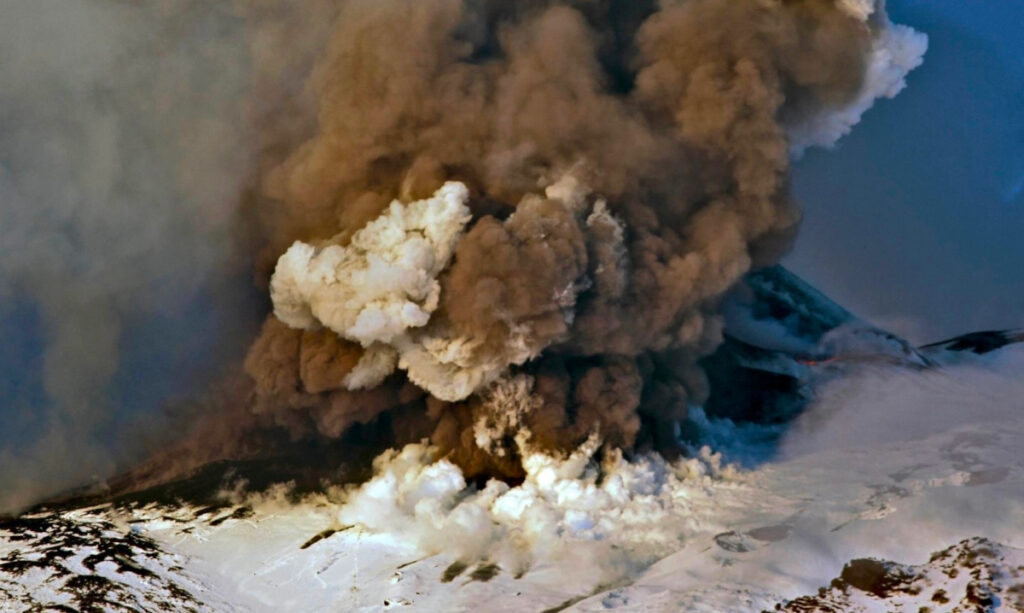The particularly low temperatures at the beginning of February 2023 and intense precipitation on 9 and 10 February 2023 transformed Etna into an idyllic winter landscape with snowdrifts that were four metres high in places and posed considerable challenges for some mountain huts.
If you visit Etna in winter, especially its snowier northern side, you will hardly believe that you are on Sicily right now. When the snow is good, you can ski on the volcano with a view of the sea, and you can also explore Etna well on foot (with or without snowshoes) in winter (for example, on our North Craters tour).
But what happens when lava and snow meet?
Freato-magmatic explosions, the 2017 accident
When these two extremes meet, sudden, violent explosions can occur, so-called “freato-magmatic” explosions; but only under certain conditions.
It is not often that these two circumstances coincide, but when they do, they pose a great danger, as in 2017 in a very unusual incident.
A lava flow emanating from the South East Crater was moving towards a depression at an altitude of 2800 metres, thrilling many people who visited it from close up. Suddenly there was an unexpected explosion.
A group of British and German tourists, as well as some journalists and scientists were taken completely by surprise by this phenomenon. Subsequently, there were two more explosions, accompanied by a high column of gas. A few casualties, fortunately not serious, were the result and a lot of fear, because it could well have been worse. The BBC’s science correspondent Rebecca Morelle, who was at the scene of the incident, describes the experience here: https://www.bbc.com/news/science-environment-39303126
The BBC’s video footage vividly shows the power and dangers of a volcano: https://www.youtube.com/watch?v=1theatygctw
In the weeks before the accident, it was possible to approach the lava flow both in the front and the side, a good remedy for the winter temperatures in the summit area. The thin layer of ice under the lava flow caused no problems and one could enjoy the lava in a breathtaking panorama. A unique privilege and proof of how unpredictable Etna can be.
The consequences of the 2017 accident
Although this incident did not have serious consequences and paramedics were immediately on the scene to attend to the injured, there was one crucial consequence: the awareness of a natural phenomenon that is not particularly common. The incident led to a scientific investigation, which concluded that the dangers of this phenomenon had been underestimated, as the ejected stones and lapilli (volcanic rocks with a size of 2-64 mm) had reached a distance of up to 200m from the lava flow.

According to the investigation, the cause of this explosion, which does not occur very often, is the large amount of steam that creates enormous pressure below the lava flow in a short time, which then suddenly and violently discharges. This unique and valuable observation not only led to a new assessment of the possible hazards, but measures were also developed to keep the consequences as low as possible and to prevent similar incidents like the one on 16 March 2017 from happening again.
This information is particularly valuable and useful now that the same phenomena can be observed again, as Etna guides, photographers, and all those currently on the mountain can better adapt to the situation.

